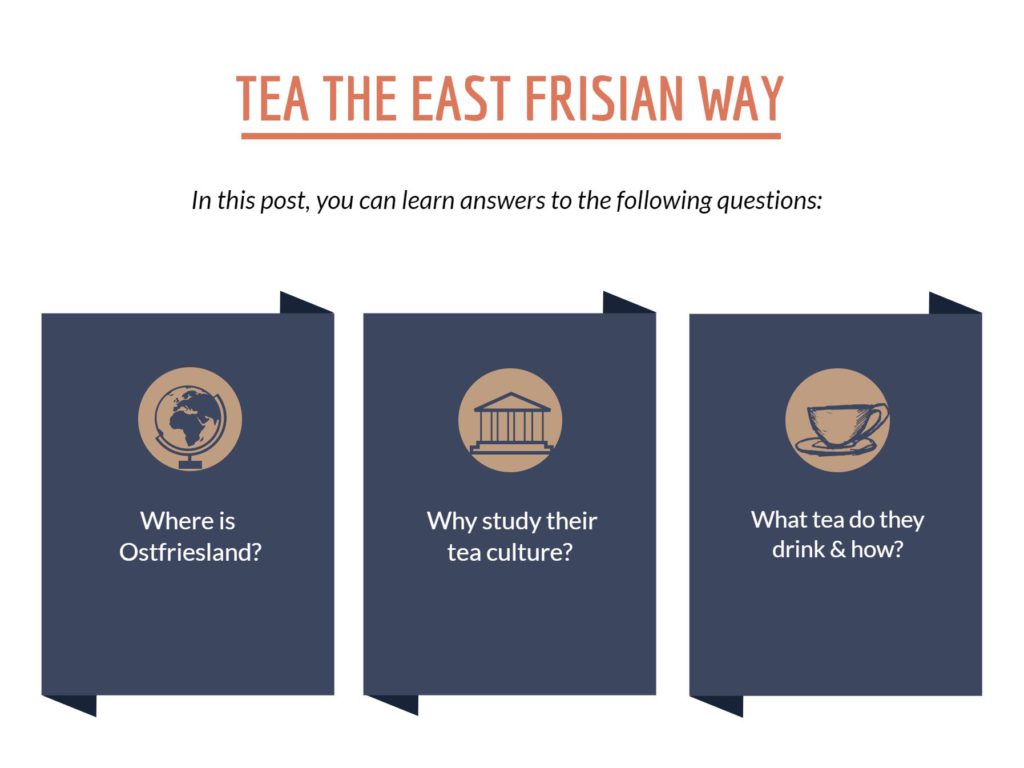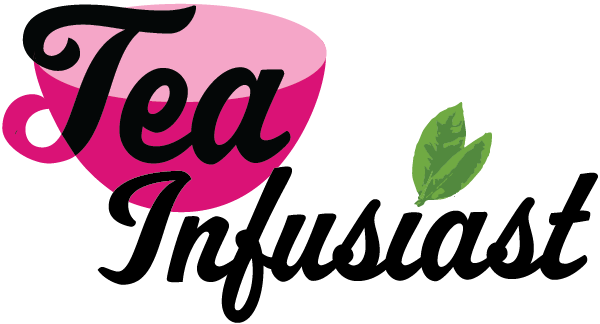East Frisians are long-time and prodigious tea drinkers.

Tea is a big deal in Ostfriesland, part of northwestern Germany that borders the Netherlands. The name of the region is sometimes translated into English as Eastern Friesland, sometimes as East Frisia. A regional museum, the Ostfriesisches Teemuseum, pays homage to the history of tea in their culture. UNESCO even highlights it, noting that East Frisia has been a tea-loving region for about three centuries. A 2013 article in the New York Times by Ian Johnson helps further quantify East Frisians’ love for tea, noting that: “[A]ccording to the German Tea Association, if East Frisia were a country its annual per capita consumption of 300 liters would be the highest in the world.” Since East Frisians have been prodigious tea drinkers for so long, let’s explore what they drink and how they enjoy their tea.
What is an East Frisian blend?
Most classic East Frisian tea blends in Germany are at least 90% Assam, tempered by Ceylon and/or Darjeeling, according to Johnson. Different blenders use different mixtures. But, it’s always a strong black tea. At least one well-known American tea company, Harney & Sons, sells an East Frisian blend. That was the first blend I tried, and I still enjoy it. I also wanted to try a blend that the East Frisians drink. Thanks to the generosity of a tea friend that I made on Instagram, Lana from @questforperfecttea, I was able to try an authentic East Frisian tea blended by Thiele, a family-owned company in Eastern Friesland. Lana also sent me the “kluntje,” white sugar rocks, which are a traditional ingredient in the East Frisian tea ritual. (Seriously, the #communiTEA is wonderful on Instagram!)
What is necessary to prepare and serve East Frisian tea?
To prepare tea the East Frisian way, you will need the following tea, teaware, and utensils.
- teapot to steep the tea
- East Frisian blend of tea
- small teacup
- cream (!)
- kluntje (or other rock sugar)
- spoon
Prepare the tea and your teacup as follows.
- Steep the tea strong–you’re going to add cream after all!
- While the tea is steeping, put the rock sugar in the bottom of your teacup. (Choose a small teacup, or don’t fill it all the way if you only have larger ones. In East Friesland, there is a traditional rose pattern.)
- Pour the hot tea into the cup, over the rock sugar. (If the tea is hot enough, you should hear the kluntje crackle. Thanks for that tip, Lana!) Don’t stir!
- Carefully add cream by pouring it down your spoon near the side of the cup. Don’t stir! East Frisians use a special “cream spoon,” a rohmlepel; however, an everyday spoon works, too.
What are East Frisian fireworks and clouds?
Watch what happens after you pour the cream. After a second, the cream that fell to the bottom of the cup will rebound to the surface, creating beautiful “East Frisian fireworks.” Then the tea and cream on the surface swirl into clouds. This mesmerizing effect is called wulkje by the East Frisians.
By not stirring, the tea retains distinctive layers. As Lana wrote, if you drink the cup in three sips, “the first sip is smooth [and creamy], the second is bitter, and the third is sweet.”
Share your thoughts
East Frisian tea is the only kind I enjoy with cream. In fact, it took me almost a year to work up the desire to try it with the cream. (I’m not even kidding!) If you don’t use cream, you won’t get the amazing East Frisian fireworks or distinct layers. The boldness of the tea contrasts beautifully with the sweet cream. It’s well worth the try.
Have you tried tea the East Frisian way? I compare two East Frisian blends in a previous post. Please let us know in the comments. Do you have a favorite blend? As they say on the Ostfriesisches Teemuseum: “Prost tee!”
Interested in other tea cultures, check out my post “The Flowering of Chilean Tea Culture.”

14 replies on “The What and How of East Frisian Tea”
I’ve seen your Frisian fireworks and I think I will have to go ahead and give this a try. I don’t have kluntje but might try it with a sugar cube. Is there a specific cream you recommend
Excited you want to try! If I were using a sugar cube, I’d probably half it to make it more “kluntje” size. (They range in size, but the biggest ones in the group I received are still a bit smaller than a sugar cube.) I have also used Belgian rock sugar before I received the kluntje. As for cream, to get the full effect, I would try regular or heavy cream. I think the firework are better that way. Please let me know if you try it! I’d love to hear what you think.
I love this blog post. It is well researched and inspires me to want to try the East Frisian way of taking tea. So glad to have discovered your blog.
What a kind thing to say, Lynn! Thanks for the encouragement. 🙂
What a beautifully written summary and exploration into EF Tea and Culture- and that is coming from an East Frisian! Thank you Traci!
And yes, the Teacommunity is awesome. So happy I met people like you!
Ahh. Lana! How sweet of you to say such kind words. They means a lot coming from you. Thank you for them and for the tea and kluntje! <3
Oh, Traci, you got me hooked on Harney and Sons East Frisian tea last summer. And I’m a strictly black tea, no cream or sugar drinker, so it was a challenge to try it the traditional way. Thanks for the history behind it!
Mary! Sorry/not sorry (lol) for getting you into East Frisian tea. 🙂 I hope it brought you some joy. I know what you mean about how hard it is to go against the grain with our tea habits. Even though I grew up drinking milk in black tea, I always hated it when I had to use cream. (It used to happen in diners sometimes–only half-and-half or cream.) So, it was an effort to try tea the East Frisian way. Prepared like that–when in the mood–I love it. I still don’t use cream in any other tea.
Harney & Sons East Frisian blend is excellent! I’m loose tea person and theirs is worth the price.
Thanks for sharing your experience! I agree. I enjoy the Harney East Frisian blend, too! Did you see the post where I compare that blend to one from Thiele yet? https://www.teainfusiast.com/two-east-frisian-tea-blends/ -Traci
This was very educational for us Lipton tea drinkers! I am inspired!
Thanks, Kim! I think everyone should drink the tea they love. And, if anyone is inspired to try some new things, that’s great!
Thank you!!1
Thank you!!1